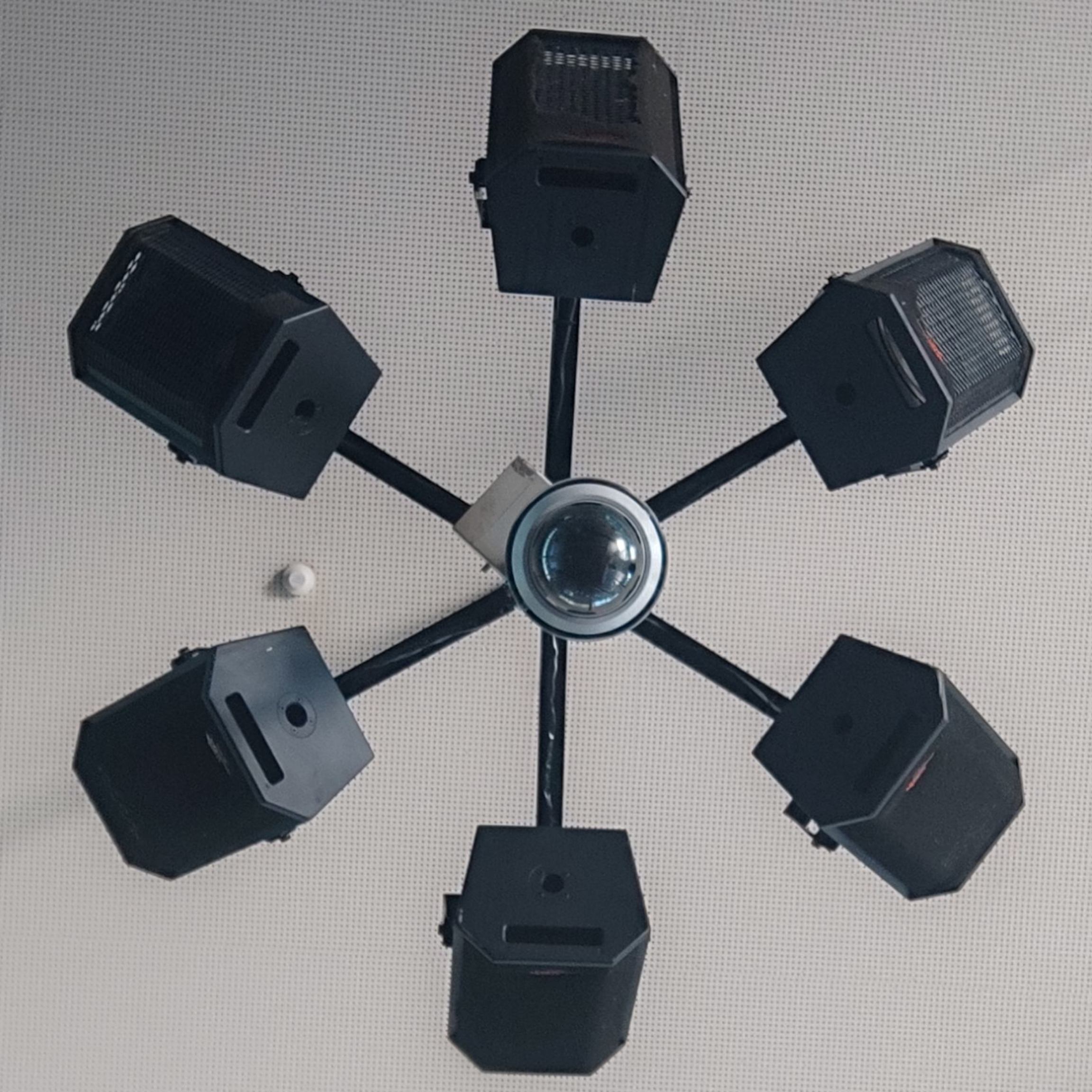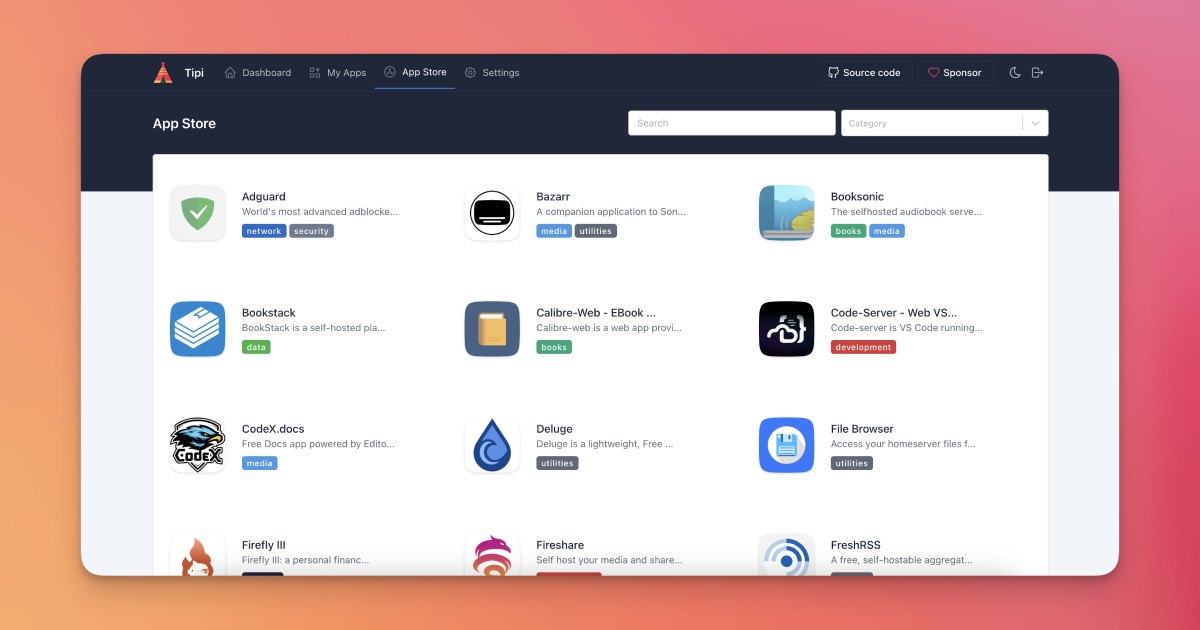- cross-posted to:
- [email protected]
- [email protected]
- [email protected]
- [email protected]
- cross-posted to:
- [email protected]
- [email protected]
- [email protected]
- [email protected]
It has an ‘App store’ that’s been growing a lot lately. Writing new docker-compose.yaml files is easy (see: https://www.runtipi.io/docs/contributing/adding-a-new-app ), and exposing them behind NAT, e.g. from home it’s easy too (see: https://www.runtipi.io/docs/guides/expose-apps-with-cloudflare-tunnels )… But my favorite perk is the folder structure (see: https://www.runtipi.io/docs/reference/folder-structure ), and the fact that ‘media’ is shared between apps.
Let me preface this with that I am an experienced CLI user and with Docker, so this really is not in my interest generally, but getting older and dealing with a variety of other personal issues, having a nice dashboard to deploy things sometimes is just really nice ya know? So I figured I would put on my dusty beginner’s hat to get this a run.
For the beginner, it’s a nice system to get started and get your feet wet with a no-nonsense app install experience. I tested this in a VM on my desktop and installed Sonarr and Sabnzbd which if you use Docker with these, you know the proper volume mapping is key. They take the hassle out of doing this for the end user. With that said though - file permissions are a bit off and both Sonarr and Sabnzbd needed the proper permissions set for the folders. Not a deal breaker for someone accustomed to the CLI, but for a new self hoster, this can be a bit frustrating.
Their app store is pretty impressive and I guess growing, the install on the server was painless to get running. It’s something to keep an eye on, it’s in good company with the other ones like Umbel and CasaOS, each has their own qualities.
For those wanting more fine grained control over the apps and installs, Tipi is a bit more opinionated to the port numbers and paths used and you can’t easily modify those (at least from what I could tell). In the long run, this is a non issue for the most part if you are starting on a freshly installed server and don’t want to handle the challenges of proper path mapping, reverse proxying and so forth. (They include Traefik in the install). Not having to worry if port 3000 is already taken or 8080 is, you can trust that it will handle it and it does!
Thanks for the detailed review! As another user, I agree overall with your experience. Just for the sake of explain how the applications are configured, let me add this. Port numbers are defined in, for example, https://github.com/meienberger/runtipi-appstore/blob/master/apps/sabnzbd/config.json …Meanwhile, file permissions should be set as PID/GID 1000, according to https://github.com/meienberger/runtipi-appstore/blob/master/apps/sabnzbd/docker-compose.yml
PID/GID 1000
Can I pick your brain on this? I have my folders set to 1000:1000 , Radarr can import the movies folder but Sonarr complains about the tv folder not being writeable by user abc.
The tv folder looks to have the same permissions to me though? Any idea what could be up with that?
To be clear, you have a (user:group) 1000:1000 on both containers? What about having the same mapping of Uid and Gid on the host? I assume the host is a desktop distro, and they usually have it already. You would require the three, so that permissions are “coherent” between each system
Yeah the user:group mapping was correct. I did work it out though. It was the storage volume being full, it presented as not being writeable! My mergerfs config wasn’t quite right. As soon as I set it to most free space it was working again.
It’s just funny that I didn’t get the same error in Radar.
I’ve been running Tipi for a couple months on a home machine. I don’t have any significant experience with Docker and Tipi was simple enough I could get it running pretty easily.
I use tailscale to access it away from home. I’m running FreshRSS, Invidious, LibReddit, Joplin and Vikunja. Pretty slick!
deleted by creator
The dashboard, and all apps, have Traefik on top. The certs are generated there. Cloudfare Tunnels is just an option.
deleted by creator
So I’m the kind of person who runs back ups using two synologies and is more of a GUI guy. I use mac and pcs very fluently but I’m not entirely terminal or command line literal.
Will something like this cause more problems if I’m looking to get rid of Google drive and start switching to next cloud or will this make my life easier?
This requires some command line to fully tame the beast(s)… sorry, the apps! that you’d be hosting. If you prefer an easy solution, for Nextcloud, specifically, I think you can try the managed instances (e.g. Hetzer offers ‘nx’ boxes). It’s better than paying premium fees to GAFAM imho every step counts ;)
How does this compare to Yunohost?
The most salient difference is that YNHST is tied to Debian, while Runtipi is a set of containers you can install on any distro
What are the pros and cons?
These comparisons are extremely difficult to make (not many people really tried all, we all judge from docs, etc.) That being said, I think runtipi is simpler in the curve of customization, if you have the knowledge. If you don’t, well then maybe, a full-blown OS is better. But my original post addressed the advantage I see on runtipi, with all the links to the docs. It’s powerful and encourages customization. To me, it’s a good mid-point between ‘raw’ docker (e.g. linuxserver.io which btw provides most of the images), and a highly automatized system. For example, one of the bigger features is that you can set repositories (e.g. on GitHub) as stores: I will repeat the link to these docs here: https://www.runtipi.io/docs/contributing/adding-a-new-app …over these repos you simply write docker-compose YAML files. I don’t know what’s the solution to this on CasaOS, but YunoHost has a set of scripts or bash functions. That’s something I believe takes more effort to mantain. All in all, imho, runtipi has a good balance between flexibility, complexity, and customization.
Or casaOS
I haven’t had much luck with app-store-type solutions in the past, but this looks really promising! Thanks for sharing :)
I’d like to try this, but how will it work alongside my existing setup?
I run NPM to get SSL for my domain, so now there will be two services trying to do the same?
I also run Mattermost which is not in the Store here, so I will still need to run some things outside of this service - while still needing the SSL and reverse proxy.
Hum, the cloudflafe tunnel looks powerfull to bypass a CGNAT !







